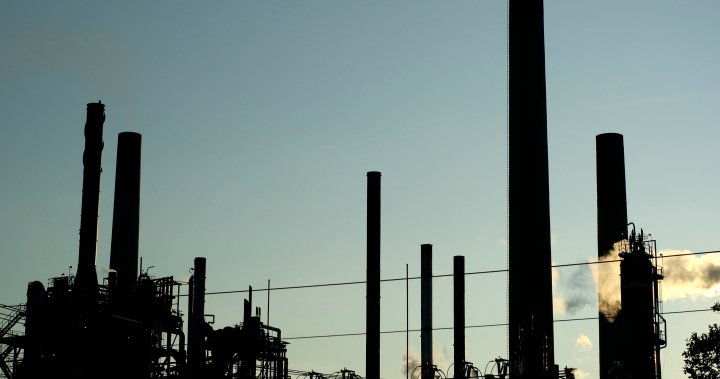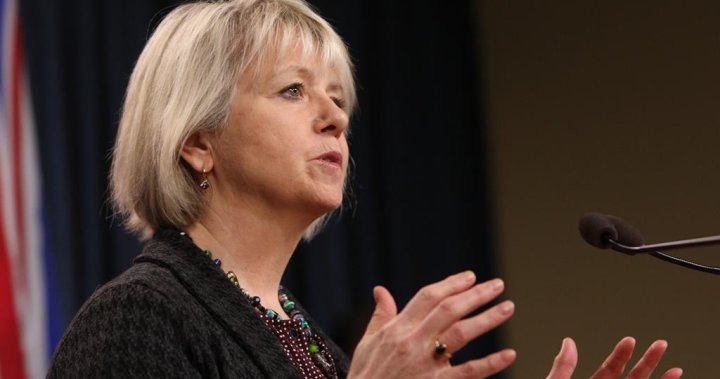One of Canada’s largest oil companies, Imperial Oil Ltd., has been ordered by Ontario to pay $1.125 million for a slop oil spill at its Sarnia, Ont. site in April 2021 that sickened nearby residents.
The fine, levied by the Ministry of Environment, Conservation and Parks, is the most substantial penalty under the Environmental Protection Act on public record since 2007.
It is part of a recent push by the provincial and federal governments to crack down on petrochemical companies that pollute in Sarnia.
The area is known as Chemical Valley: there are 62 large facilities within a 25-kilometre radius. Many of those who live alongside it, particularly members of Aamjiwnaang First Nation to the south, which is surrounded by industry, have worried the emissions from these plants are making them sick.
According to an agreed statement of facts filed in the Ontario Court of Justice in Sarnia, the April 15 Imperial Oil spill occurred as a result of a three-month-long leak in a steam line that eventually bored a hole in a nearby slop oil line, releasing 1,150 litres of slop oil on the ground.
Slop oil is a waste product that typically consists of a mixture of crude oil, water and waste solids. It contains various contaminants, which may include hydrogen sulphide. If leaked into the ground or air, it can irritate the eyes, nose, throat and lungs, as well as cause headaches and dizziness.
At 3:52 p.m. on that Thursday afternoon, a resident called the Ministry’s Spills Action Centre hotline to report a strong odour and a headache. Members of Aamjiwnaang First Nation, which is located roughly one kilometre downwind of the refinery, posted on Facebook about a “terrible” smell, like “burnt rubber.”
Court documents indicate a dozen people reported, “some or all of eye, nose and throat irritation, headaches and nausea… that restricted their movements and activities, and caused them concern for their health and safety.”

Get weekly health news
Receive the latest medical news and health information delivered to you every Sunday.
Imperial Oil and Ontario’s Ministry of the Environment, Conservation and Parks conducted air monitoring in the area after the leak was discovered but did not detect elevated levels of hydrogen sulphide, benzene or gas vapour.
On account of the spill and the impact to the community, the Ministry charged Imperial for the leak under the Environmental Protection Act, and on Sept. 16, 2024, the petrochemical company pleaded guilty.
The court fined Imperial $900,000, levied a victim fine surcharge of $225,000, and gave the company 90 days to pay. The maximum fine to a corporation for this type of violation is $6 million on a first conviction and $10 million for subsequent convictions. Imperial Oil reported $4.9 billion in net income for the full year 2023, down from $7.34 billion in net income in 2022.
The proceeds will go to Lambton County, where Imperial is located — and not Aamjiwnaang First Nation, which was in the path of the odours, according to a spokesperson with the Ministry.
“When spills or environmental misfortunes occur in Chemical Valley, it’s obvious that residents of Aamjiwnaang First Nation are directly impacted,” Chief Janelle Nahmabin said.
“There have been instances in Canada where agreements are made between the local municipality and a First Nation in regards to sharing funds resulting from environmental fines. This would certainly be beneficial to Aamjiwnaang as many are aware of our environmental struggles.”
The victim surcharge fine will go to the Ontario Victims’ Justice Fund to support services for victims of crime.
“We regret this incident, and we accept the fine imposed by the court,” said Kristina Zimmer, public affairs manager with Imperial Oil. “Imperial has since made changes to its equipment maintenance plan by modifying the criteria used to prioritize repairs to mitigate the risk of a reoccurrence of the same incident.”
In the past year, Aamjiwnaang First Nation has been exposed to elevated levels of cancer-causing benzene that the Ontario government says were emitted from another neighbouring plant, INEOS Styrolution, prompting the declaration of a state of emergency and an evacuation order.
As recently as this week, some community members were, once again, temporarily relocated over renewed concerns of benzene exposure. INEOS has said it plans to shut down the facility by June 2026, and that it didn’t breach emissions limits which were in place last spring.
Imperial Oil was also fined $647,909 in 2021 for nine separate leaks of sulphur dioxide two years earlier.

In 2017, following a Global News investigation into concerns that spills and leaks from industrial plants were making the people of Aamjiwnaang sick, the Ontario government launched a multi-million dollar health project to examine the possible connection between air pollution and public health.
The final report, released earlier this year by the Sarnia Area Environmental Health Project, found an increased risk of cancer, particularly leukemia, because of exposure to air pollution. The report also found acid gas flaring, which can cause spikes in sulphur dioxide levels, can pose health risks to people with breathing difficulty.
© 2024 Global News, a division of Corus Entertainment Inc.







